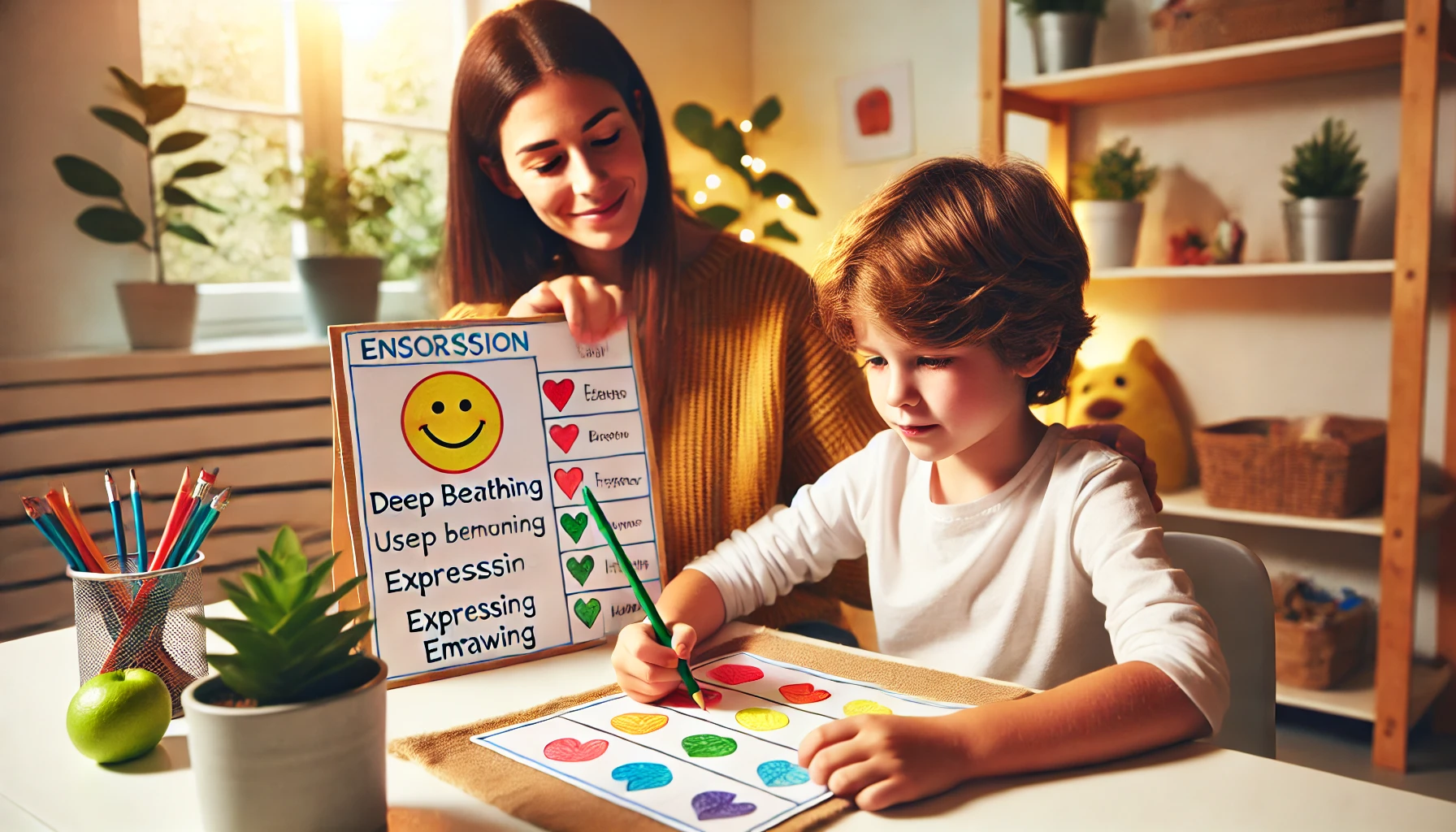How to Teach Young Children About Managing Their Emotions
Helping young children understand and regulate their emotions is essential for their emotional well-being and social development. When kids learn how to recognize their feelings, express them appropriately, and calm themselves, they build resilience and stronger relationships. Parents can guide children in emotional management through modeling, engaging activities, and open conversations. In this article, we’ll explore practical ways to help children navigate their emotions in a healthy way.
Why Teaching Emotional Regulation is Important
- Encourages self-awareness – Helps kids identify and understand their feelings.
- Develops self-control – Teaches children how to respond to emotions calmly.
- Improves social interactions – Encourages positive communication and conflict resolution.
- Reduces tantrums and frustration – Helps children express emotions constructively.
- Builds resilience – Teaches kids how to handle challenges with a positive mindset.
1. Teach Kids to Recognize and Name Their Emotions
Helping children identify their feelings is the first step in managing them.
Activity Idea:
- Use an emotion chart with different facial expressions and labels like happy, sad, frustrated, and excited.
- Ask, “How are you feeling right now?” and help them find the right word.
- Play a guess-the-emotion game, where kids match feelings to different situations.
What Kids Learn:
- That all emotions are normal and okay.
- How to recognize their own emotional states.
- The vocabulary to express their feelings in words instead of actions.
2. Encourage Healthy Ways to Express Feelings
Teaching children to communicate their emotions prevents frustration and outbursts.
Activity Idea:
- Teach simple phrases like “I feel upset because…” instead of reacting impulsively.
- Use puppets or dolls to role-play expressing different emotions.
- Encourage journaling or drawing as a way to express feelings visually.
What Kids Learn:
- That talking about feelings is healthy and encouraged.
- How to express emotions in constructive ways.
- The importance of sharing their feelings instead of bottling them up.
3. Teach Calming Techniques for Big Emotions
Showing kids how to calm themselves helps them manage frustration and anxiety.
Activity Idea:
- Practice deep breathing exercises: “Breathe in like smelling a flower, breathe out like blowing out a candle.”
- Create a calm-down corner with soft pillows, books, and sensory toys.
- Encourage movement-based calming, like stretching, squeezing a stress ball, or taking a short walk.
What Kids Learn:
- That they can control their emotions by using calming strategies.
- How to recognize when they need to take a break.
- The importance of self-regulation in stressful moments.
4. Read Books About Managing Emotions
Stories help children relate to characters who experience and regulate emotions.
Activity Idea:
- Read The Color Monster by Anna Llenas (teaches kids to understand their emotions).
- Discuss the story: “What did the character do to feel better?”
- Ask children to relate the book to their own emotions.
What Kids Learn:
- That emotions come and go, and they can be managed.
- Different ways to deal with feelings in a healthy way.
- That even big emotions can be understood and controlled.
5. Help Children Recognize Triggers and Solutions
Teaching kids to identify what causes their emotions helps them develop coping skills.
Activity Idea:
- Ask, “What made you feel that way?” after an emotional moment.
- Create a “feelings journal” where kids draw or write about what made them happy, sad, or angry.
- Role-play situations and brainstorm healthy ways to handle emotions.
What Kids Learn:
- How to understand what affects their mood.
- That they have control over how they respond to feelings.
- The importance of recognizing emotional patterns and making positive choices.
6. Teach Problem-Solving Skills for Emotional Situations
Helping kids think through emotional challenges encourages resilience and adaptability.
Activity Idea:
- If a child is upset, ask, “What can we do to make this better?”
- Encourage brainstorming: “What are three things you can do if you feel frustrated?”
- Teach conflict resolution skills: “If a friend takes your toy, what could you do instead of yelling?”
What Kids Learn:
- That emotions don’t have to control their reactions.
- How to think before responding to situations.
- The power of choosing positive solutions.
7. Model Healthy Emotional Expression
Children learn emotional regulation by watching how adults handle their own feelings.
Activity Idea:
- Say, “I’m feeling frustrated right now, so I’m going to take a deep breath.”
- Show self-control when facing challenges, like being stuck in traffic.
- Talk about emotions openly: “I felt really happy when you gave me a hug!”
What Kids Learn:
- That emotions are normal for everyone.
- How to manage feelings in a healthy way.
- The importance of talking about emotions instead of suppressing them.
8. Praise and Reinforce Positive Emotional Responses
Encouraging children when they manage emotions well builds confidence and motivation.
Activity Idea:
- Say, “I love how you took deep breaths instead of yelling—that was a great choice!”
- Use a feelings success chart, where kids earn stickers for expressing emotions in a healthy way.
- Ask, “How did it feel to calm yourself down instead of getting upset?” to encourage reflection.
What Kids Learn:
- That managing emotions is a skill that gets better with practice.
- How positive emotional regulation makes them feel good.
- The motivation to continue making healthy emotional choices.
Final Thoughts
Teaching young children about managing their emotions helps them develop self-awareness, resilience, and strong social skills. By modeling emotional regulation, encouraging open conversations, and providing calming strategies, parents can help children navigate their feelings in a positive and constructive way.
